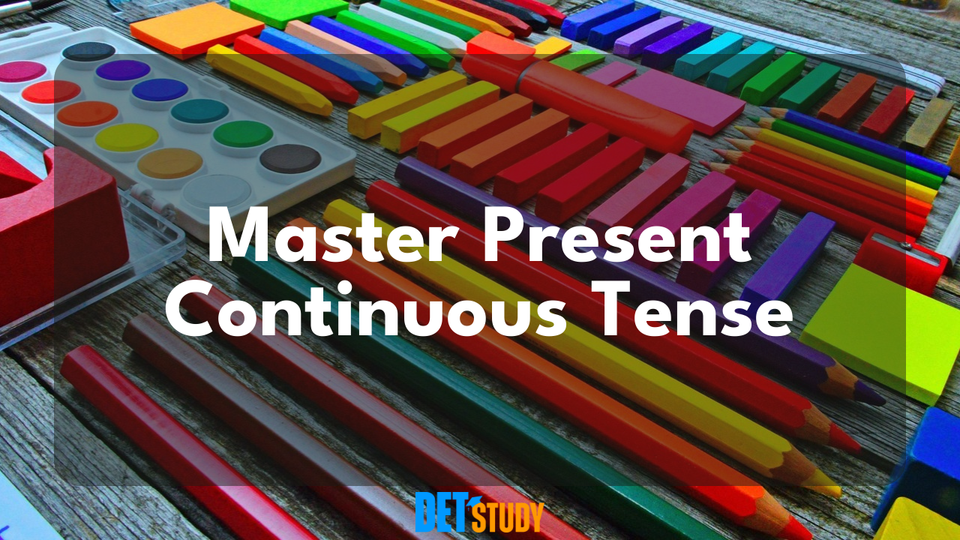Forming Present Continuous Questions: Your Guide to Confident English Communication

Introduction to Present Continuous Tense
The present continuous tense (also called present progressive) describes actions happening *now* or around the present time. It uses "to be" with the main verb's present participle (-ing form). Forming questions with this tense involves a slight structure change. 🧐
How to Boost Your Duolingo English Test Score by 10 PointsStructure of Present Continuous Questions
To ask a question in the present continuous, use this simple structure:
- Start with "Am," "Is," or "Are."
- Add the subject (who or what is doing the action).
- Use the main verb with an "-ing" ending.
Basic structure: Am/Is/Are + Subject + Verb(-ing) + ?
Examples
- "Are you watching TV?"
- "Are" pairs with "you." "Watching" is the -ing form of "watch."
- "Is she reading a book?"
- "Is" suits "she." "Reading" is the -ing form of "read."
- "Am I doing this correctly?"
- "Am" is for "I." "Doing" is the -ing form of "do."
- "Are they playing football?"
- "Are" is for "they." "Playing" is the -ing form of "play."
- "Is it raining outside?"
- "Is" is for "it." "Raining" is the -ing form of "rain."
Usage in Everyday Conversation
Present continuous questions are common for discussing ongoing activities and future arrangements. 🗣️
- "Is he coming to the party tonight?" (Future plan)
- "Are you working on the project right now?" (Current action)
- "Am I interrupting something important?" (Current action)
- "Why is the dog barking so loudly?" (Reason for current action)
- "What are you doing this weekend?" (Future plans, despite "this weekend")
Common Uses of Present Continuous Questions
Present continuous questions are key for discussing current actions, temporary situations, and future plans. They help clarify unfolding events. 🎯
Asking About Ongoing Actions
Inquire about activities happening right now.
- "What are you doing?"
- "Why is she crying?"
- "Are they studying for the exam?"
Inquiring About Temporary Situations
These questions address non-permanent circumstances.
- "Is he staying with his parents these days?"
- "Are you feeling better?"

Discussing Future Plans or Arrangements
Confirm pre-arranged future events.
- "Are we meeting Sarah tomorrow?"
- "Is she joining us for dinner tonight?"
Exploring Changes and Trends
Ask about ongoing developments.
- "Is the company hiring more staff this year?"
- "Are more people switching to electric cars?"
Mastering these uses boosts your conversational English for dynamic situations. 🚀
Tips for Practicing Present Continuous Questions
Effective practice strategies help master present continuous questions. 🧠
1. Understand the Structure
Remember: (Question word) + am/is/are + subject + verb-ing?
- "What are you eating?"
- "Is he coming to the party?"
2. Incorporate Question Words
Use words like what, where, why for specific details.
- "What are you reading?"
- "Why is she laughing?"
3. Practice with Everyday Scenarios
Create questions based on daily life.
- At a café: "Are you drinking coffee or tea?"
4. Engage in Role-Playing
Practice with a partner to simulate real conversations.
- Person A: "Are you listening to the new podcast episode?"
5. Use Online Resources
Utilize apps and websites for interactive exercises and feedback.
Practice English Now6. Observe and Ask
Mentally or verbally question ongoing actions around you.
- "Is John working on the project right now?"
7. Record Yourself
Listen to your recordings to spot areas for improvement.
8. Combine with Other Tenses
For advanced practice, mix tenses to contrast their uses.
- Present Simple: "Do you like coffee?"
- Present Continuous: "Are you drinking coffee right now?"
These tips will refine your ability to ask present continuous questions confidently. 💪
Common Mistakes to Avoid
Steer clear of these common errors when forming present continuous questions to ensure clear communication. ❌
- Incorrect Word Order
- Incorrect: "You are watching the movie?"
- Correct: "Are you watching the movie?"
- Forgetting the Auxiliary Verb
- Incorrect: "Why you playing the guitar?"
- Correct: "Why are you playing the guitar?"
- Mixing Tenses
- Incorrect: "Is he works on the project?"
- Correct: "Is he working on the project?"
- Using the Wrong Form of the Main Verb
- Incorrect: "What is she write?"
- Correct: "What is she writing?"
- Misplacing the Subject
- Incorrect: "Is eating she dinner now?"
- Correct: "Is she eating dinner now?"
- Neglecting Question Words
- Incorrect: "Are they visiting?"
- Correct: "Why are they visiting?"
Start with am, is, or are, then subject, then -ing verb.
Always include am, is, or are.
Use present continuous for actions happening now.
The main verb must always end in -ing.
Place the subject correctly after am/is/are.
Include words like what, why, who when asking for specific information.
Avoiding these mistakes will help you form correct and clear present continuous questions. ✅
DET Study offers over 15,000 practice questions, focusing on adjectives and adverbs to strengthen grammar. Regular practice with these materials boosts confidence for the Duolingo English Test, helping you achieve desired scores.
🎯 Need more practice? Check out DETStudy.com for expert resources, 15,000+ practice questions, and AI-powered writing and speaking feedback.

